We Might Eat Leftovers
Second Wind’s Fate Could Impact Enfield’s Funding Future
The Award Meeting’s Expanded Story
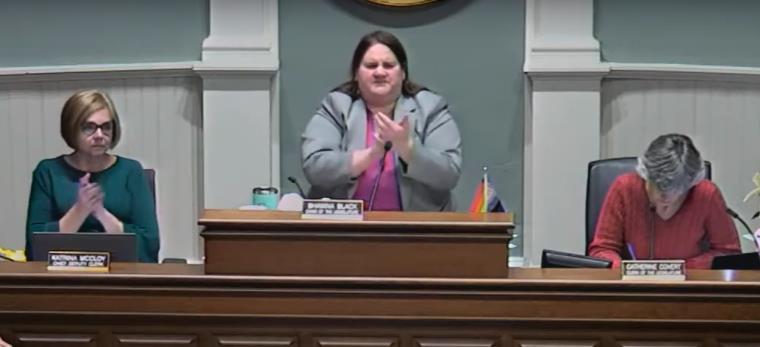
by Robert Lynch, December 23, 2022
Tompkins County’s legislators Tuesday night approved more than $6 Million to spend on 53 applicants’ pet projects under Tompkins County’s Community Recovery Fund. They then applauded themselves. Newfield’s Randy Brown did not clap. Instead, he looked down at his papers. Randy Brown had voted no. Randy Brown was disappointed. And Randy Brown was angry. His constituents had just been left in the dust.
“Enfield is completely ignored by the County; Newfield, completely ignored by the County,” Brown said. In terms of government funding, “Nothing happens there.”
Brown told colleagues that in Enfield, “They’re pinching pennies every day; the poorest district in the county. They’re buying used equipment ‘cause that’s all they can afford. And yet nothing got funded. In recognition of all the problems in the county, you didn’t even think about Enfield and Newfield in my mind.”
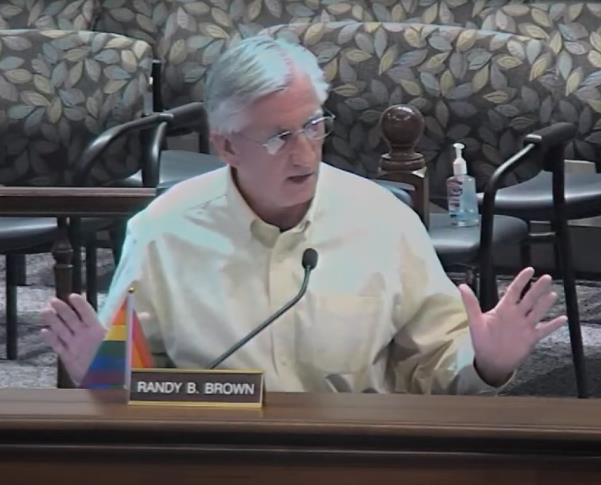
For all the millions spent elsewhere, Enfield and its community servants that night hadn’t received a single penny. And most likely, they won’t. Yet one or two glimmers of hope remain. That is what this story is about. You won’t read about it elsewhere.
Bringing to fruition a year-long promise and culminating a three-month process of submission and review, the County Legislature December 20th endorsed the funding recommendations of a six-person Advisory Committee of its members. The six committee members—who because of a legislative vacancy held effective veto power over the majority—showed amazing resilience for holding together to block attempted amendments. And those who sat beside them showed little initiative to buck momentum.
A dozen or so proposed amendments that would have altered the committee’s choices were, one by one, beaten back, a couple of them without even earning a seconding vote. In first one, and then a second round of its earlier review, the committee had chosen to shut out the Town of Enfield, its Food Pantry, its Fire Company, and its Community Council from the worthy requests they’d individually submitted. And Brown’s home town of Newfield hadn’t fared much better.
“I respect what the committee did, and this is definitely water that’s never been paddled through before,” Brown told legislators moments before he cast his lone dissenting vote. “But I feel that the committee didn’t even understand the transformative processes that Newfield-Enfield attempted to do.”
First, Brown slammed the committee for snubbing during its initial round the Quarter-Million Dollar joint collaborative between Newfield’s Town, its school, and its library to upgrade recreation facilities. Then he turned to Enfield:
“Enfield is feeling the exact same way,” Brown said. “They’re on their own.”
From the flip side of the funding debate, Recovery Fund Committee Chair Dan Klein offered up his own memorable quote.
“I think this may be one of those instances where since no one seems happy that means we did a good job,” Klein stated, the Danby Democrat taking pride in his committee’s hard work, but assuredly relieved its job had now ended.
Sorry, Dan, it may not have.
A “Tale of Two Tompkins Counties” became the take-away any careful observer could have drawn from the evening’s dueling narratives. And freshman Republican legislator Brown made sure you’d remember his own narrative his way.
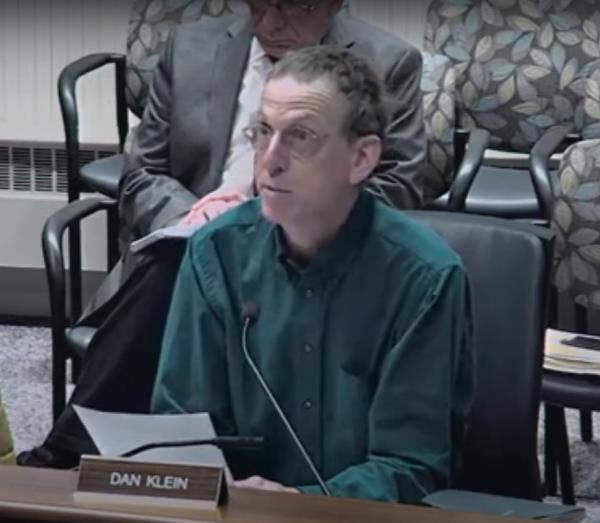
Cayuga Medical Center (CMC) had won the biggest prize of the night; $1.5 Million in Recovery funds to establish a “Crisis Stabilization Center” for mental health treatment inside the Shops at Ithaca Mall. The committee’s other most controversial handout, $510,000 to finance Second Wind Cottages’ building of 25 campsites for the homeless in Newfield, hadn’t yet ripened for a vote. It couldn’t be included in the evening’s funding package. But because the Legislature also rejected Brown’s efforts to explicitly defund Second Wind, you can expect body shop owner Carmen Guidi’s homeless-housing brainchild to get the money it wants, providing, of course, that procedural hurdles get tossed aside first.
Be advised, they might not.
Brown had led the fight against both Cayuga Medical and Second Wind. But while Cayuga Medical’s funding is now a done deal, Second Wind’s is not. Its half-Million dollar appropriation couldn’t be decided Tuesday because a so-called “SEQR” environmental review remains unfinished. And a SEQR review, if done right, could rope in a lot of ancillary issues, not the least of which is Newfield community and Town Board opposition to the project.
Second Wind‘s proposal would build 25 new cabins to complement the 18 slightly-larger structures that already encircle Guidi Collision’s shop off Newfield’s Route 13 north of the hamlet. The campsites would admit “low-barrier” unhoused men. And what worries community leaders most is that the new arrivals would be plunked down in a place that lacks both the emergency resources to protect those vulnerable residents, and the police presence to, if needed, protect community residents from them.

“Would there be drugs? Yes. Would there be alcoholism? Yes,” Brown reported Second Wind’s leadership as having acknowledged when he’d met with them. The campsite’s “low barrier” admission standards would constitute a change from the present, Brown said. What’s more, some worry Second Wind could become a dumping ground for convicted sex offenders as well as for other supposed undesirables now subsisting in Ithaca’s homeless encampment better known as “The Jungle.”
Randy Brown advanced a Resolution on meeting night that would have removed the Second Wind grant from consideration for Community Recovery funds. He would have spread the money to other applicants. Brown’s measure lost five votes to eight. If the eight objectors continue to hold tight, they’d make a majority in favor of Second Wind should it survive SEQR scrutiny and head to a vote.
“This is not healthy for Newfield,” Brown warned the Legislature of Second Wind. He reported that of 43 Newfield constituents he’d talked to about the project, only two had said they support it.
Debate over Brown’s defunding Resolution engulfed some 40 minutes of a four-and-a-half-hour marathon meeting. And during the debate, the legislator warned that what’s normally a perfunctory SEQR review could, instead, bring Newfield’s defenders to their battle stations.
“They’ll get an attorney in there. They’re going to fight this,” Brown warned. “I’m telling you right now, they’re not going to go for this. They’re not going to roll over.”
The Newfield legislator worried aloud that some County Planning staff might attempt to paper-over community objections if they were to usurp the SEQR process from the Town. Brown later apologized after Legislature Chair Shawna Black cautioned him not to criticize those on the County’s payroll.
But, at its core, Brown saw the Second Wind initiative as filling a void left by others’ irresponsibility; the Guidi group’s seeking to “grab” an opportunity to remedy a homelessness problem whose solution the City of Ithaca is all-too-willing to abdicate and to offload.
“The City has done nothing,” Brown told legislators. “They’ve just let it sit. And here’s the Legislature going, ‘Oh boy, we’re going to fix the problem. Let’s send it to Newfield!’”
“As a matter of comity, I do not want to be funding a project or enabling a project that the host municipality is so much opposed to,” Budget Chair Deborah Dawson, an Advisory Committee member, said in support of Brown’s resolution. Back on December 8th, the Newfield Town Board had unanimously voted to oppose Second Wind.
Yet, Dryden’s Greg Mezey came to the fragile encampment’s defense.
“But these are people,” Mezey spoke of those who would newly-populate Second Wind. “And these are opportunities for people to have shelter and some structure and some programming. And maybe this will do them a world of good.”
“Maybe taking a few people out of downtown Ithaca and putting them in Newfield, they’ll get to experience what you love so much about living in Newfield,” Mezey told Brown. “We owe it to 25 residents of Tompkins County to try to give them a better quality of life,” Mezey said. “It’s unfortunate that Newfield doesn’t want to be part of that solution.”
“I take offense at Newfield not wanting to be part of the solution,” Brown rebutted, observing that his town has already welcomed Guidi’s existing 18 cottages and would be willing to do more were the same kind of housing to be built.
“I don’t think putting this in Newfield is the best use of our public money,” Democrat Rich John added to the debate.
“If I were to pick a spot, that just wouldn’t be the site I’d pick,” Lansing Republican Mike Sigler chimed in. “It’s close to nothing.” Brown had reported the encampment even lacks a bus stop on its own side of the highway.
The site works only “to further isolate people who are already isolated,” Sigler said.
Yet Legislature Chair Shawna Black took Greg Mezey’s side.
“It makes me sad hearing this City versus County scenario,” Black said. She called Second Wind “one of many solutions,” and a “multi-pronged way for us to address homelessness.” She voted against Brown’s resolution. And she would likely support Second Wind for funding should it eventually come to a vote.
Whenever—and by whomever—the Second Wind environmental study gets completed, both the environmental report and Second Wind’s funding would then head back to the County Legislature for a pivotal vote. But should Second Wind falter, either on the legislative floor or before it reaches there, the $510,000 saved could be parceled out to others, namely to the many currently denied funds. Of course, no guarantee exists that Enfield applicants would claim any of those moneys. But they could.
Of the Enfield agencies that filed for Recovery Fund support, but didn’t make the cut, the Enfield Community Council (ECC) scored highest. And if Second Wind were to drop out, ECC would likely be the first of Enfield’s aspirants to drop in. But its inclusion stands far from certain. Positioned above ECC in the Advisory Committee’s complex prioritization spreadsheet sits Khuba International, a cooperative farming effort geared toward people of color. Khuba asked for One Million Dollars. As many as five people spoke in Khuba’s favor at the start of Tuesday’s meeting.
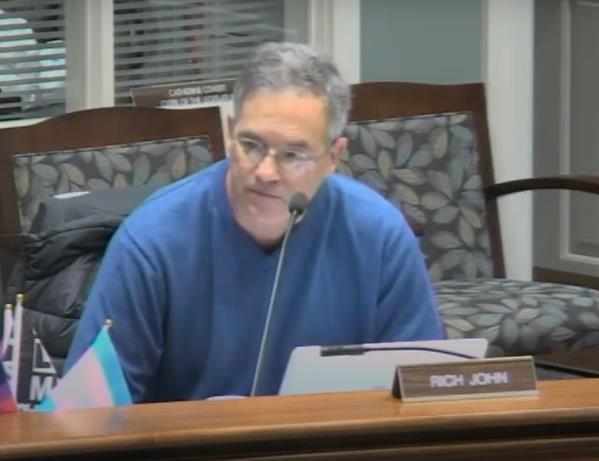
There’s another big-ticket applicant, Unity House, standing in front of ECC in the funding queue. Of course, nothing requires the Legislature to follow the rank-order laid down by the Advisory Committee and its highly-paid consultant. Perhaps what may become more significant is how much Randy Brown can bring shame to his colleagues about how Enfield has been slighted and whether anyone’s face might be saved by throwing the county’s poorest town a crumb or two.
There’s yet a second funding route for Enfield applicants. But it’s a path far more precarious.
When the Community Recovery Fund was first conceived in mid-2021, the current funding pot, originally a clean $7 Million, was thought to have been only the first of three. Community Recovery Funds, directly or indirectly—plans changed over time—were considered a pass-through from the federally-financed American Rescue Plan, ARPA. Tompkins County got $19.8 Million in ARPA money. At a September 2021 meeting, a prior committee had proposed spending as much as $15 Million in a multi-year, multi-round give-away, with $5 Million, and then $3 Million, spent successively in years two and three.
But budget-wary legislators balked. The more ambitious giveaway was never suggested again. Instead, the ARPA money not set aside in this year’s Recovery Fund round was diverted toward various operational expenses, up to three quarters of it for capital projects. And County Administrator Lisa Holmes told this writer after Tuesday’s meeting that she doubts it could be clawed back out.
Back last year, Tompkins County had actually intended to use its massive fund balance, and not its ARPA gift, to finance the Recovery Fund. But more litigious minds later prevailed. They cast their eyes to New York’s strict “anti-gifting” rules and urged use of ARPA, and not fund balance, to underwrite what legislators spent Tuesday night.
Nonetheless, some suggested Tuesday that tapping the fund balance could still be justified for agency funding on a case-by-case base. And if it were to pass legal muster, County coffers might be reopened for Enfield applicants and others currently left out of luck by Tuesday’s vote.
“Do we want to add something more to fund some of these issues?” Rich John asked after all amendments had been dispatched and the Recovery Fund package had headed towards its vote. John suggested considering the supplemental appropriation maybe as soon as February. Others cautioned they’d best wait until they craft the 2024 budget next fall.
“I hope we can get a clear understanding of the fund balance,” Brown said, opening the door to added funding. “I want to understand what projects could be funded with the fund balance and which could not. It would be helpful information.”
It’s a question to be answered—and a challenge to be wrestled with—later.
****
This story cannot conclude without addressing Cayuga Medical Center’s $1.5 Million request, the biggest Recovery Fund give-away of them all. Randy Brown, who said he likes CMC’s Crisis Stabilization Center concept, yet argues the hospital has sufficient money banked to pay for it, attempted to pull CMC’s request out of the funding package to accommodate more threadbare applicants. Brown’s attempt failed. Only he voted for CMC’s removal.
“This is a new and monumental task. I think it’s worth it,” Cayuga Medical’s CEO, Martin Stallone, the long meeting’s first speaker, told legislators. But the hospital chief added, “This is not something where health systems given the climate of health care today can do in and of themselves.”
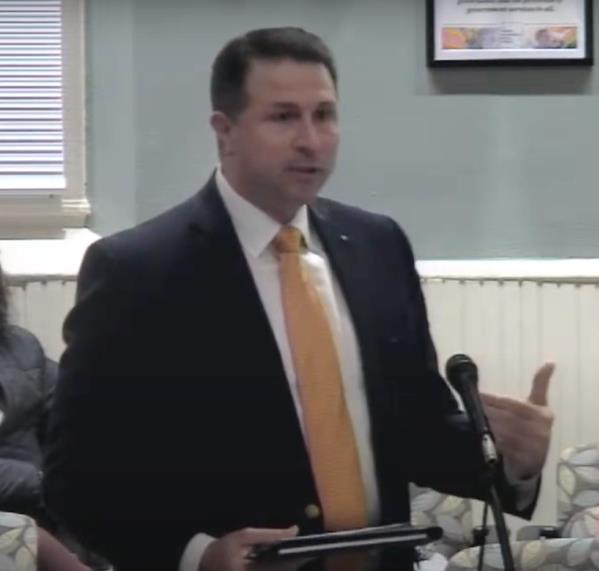
CMC had played hardball with Tompkins County, insisting that unless the County fully funded its $1.5 Million request, the mental health treatment facility would simply not happen.
“As an institution we have extended ourselves to our brink, the brink of what would responsibly be our outlay of capital, and beyond that would be unwise,” Stallone said. The CEO claimed that the hospital this year, operationally, has lost $10-20 Million. And he described the organization’s investments, that together top $100 Million, as “frankly, unstable.”
“This is transformative,” Rich John observed of the Crisis Stabilization Center proposal. “This is what this government program was really set up to do.”
John added, “This is a pretty good bargain. It’s a big ticket. But if you think about the benefits it will provide for years and years to come, I think it’s really worth it.”
Nonetheless, some like legislator Brown, maintained that forcing CMC to self-finance would “open up money for a lot of other things,” Enfield and Newfield projects included.
During the CMC debate, Greg Mezey briefly floated a compromise that would have cut the hospital’s Recovery Fund payout in half, financing its remaining needs directly from the County’s fund balances. Mezey, like Brown, recognized that shaving CMC’s request, but funding its remainder through the County treasury, would free up three-quarter Million for unfunded applicants.
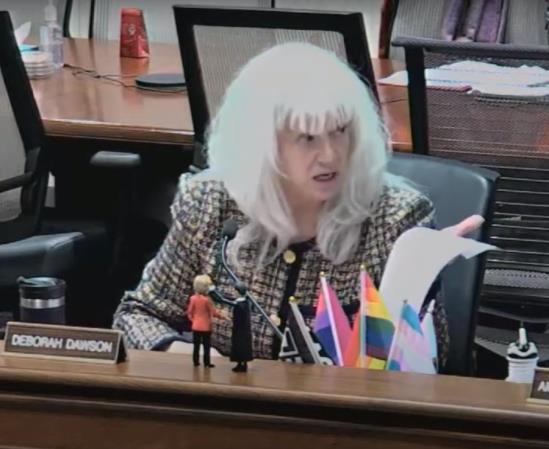
Yet Mezey’s novel idea also resurrected those pesky rules about public-to-private gifting. It would also have expanded the night’s discussion far beyond where many on the Legislature had intended to go.
“This amendment is not germane and should not be allowed,” legislator Mike Lane told colleagues.
“That makes no flippin’ sense,” Deborah Dawson put more bluntly. Mezey quietly withdrew his suggestion.
To be clear, no applicant the Advisory Committee during its many meetings in recent weeks had recommended against actually got any money Tuesday. And that includes anyone from Enfield. Nearly two dozen citizens—this Councilperson included—addressed the Legislature that night, each in vain. Only the funding fate of Second Wind Cottages remains undecided right now. Its environmental review could prompt a fight. Moreover, that fight could drag on for months.
Just like when parceling out grandma’s china after her will has been read can ignite a family feud, the award of Tompkins County’s Community Recovery Fund has left many community advocates smarting. And that includes legislator Randy Brown. And that also includes me.
“I know your committee tried to do the right thing,” I told the Legislature Tuesday night, as I spoke my three minutes on behalf of Enfield’s interests, most principally its Food Pantry. But as to the review process, I concluded, “Numbers mattered more than people. Too many calculators and spreadsheets; too few hugs and tears.”
Well, maybe better next time, if there is a next time. Second Wind may tell us so.
###
Brown: Second Wind, No; Enfield, Yes
Newfield legislator would also zero-out CMC’s big request
by Robert Lynch, December 16, 2022
The proposed expansion of a homeless encampment in Newfield has quickly become a flashpoint as Tompkins County legislators prepare to take testimony within days and then vote on disbursing $6.5 Million to scores of applicants under its federally-supported Community Recovery Fund.
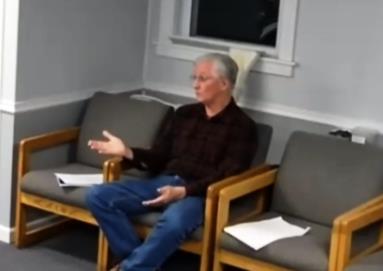
Following a unanimous December 8th vote by the Newfield Town Board stating its firm opposition, County legislator Randy Brown advanced a Resolution this week and put it on his Legislature’s December 20th agenda that would pull a $510,000 Recovery Fund grant to Second Wind Campsites from the program’s overall funding package. Brown would delete the money despite a legislative committee’s strong support for the Second Wind proposal earlier this month.
“I’m not against the idea to figure out how to deal with crime and homelessness,” Brown told the Enfield Town Board Wednesday during his monthly legislative report. “But moving it to Newfield is not desired by us, and it’s a low-barrier encampment, which means anything goes.”
Brown told the Enfield Board he’ll also seek to strip away the costliest funding award of them all. The Newfield legislator would delete a committee-supported, $1.5 Million request by Cayuga Medical Center (CMC) that would assist the hospital in building an “Intensive Crisis Stabilization Center.” CMC says the center would provide “mental health and substance use crisis support.”
Brown would like the Legislature to redirect the money saved by eliminating both the Second Wind and CMC requests and use it to help Enfield funding applicants. Currently no Enfield applicant stands among those the committee has proposed the Legislature to fund. Brown said he plans to seek funding for two of the Enfield applicants at next Tuesday’s meeting, though he did not specify which ones.
As proposed, the Second Wind Campsites project would add “25 temporary campsite shelters” to Second Wind Cottages’ existing cluster of 18, small, temporary houses for homeless men. The cottages are located off Route 13 north of the Newfield hamlet. According to the applicant’s grant proposal, Second Wind would use the half-million dollars in Recovery funding to build the campsites, connect them to power and public water, and construct a shared services facility that would include “bathrooms, showers, laundry, pantry and storage, and a dog park.”
Of the 54 eligible applicants that cleared the second of two rounds of consultant-guided review by the six-member legislative Advisory Committee December 5th, the Second Wind proposal ranked third highest, gaining support from all six on the committee. After committee members tinkered with the numbers, the recommended grant dropped $56,000 lower than what the agency had first requested.
But only after the Community Recovery Fund Advisory Committee made its recommendation did the Newfield Town Board and legislator Brown weigh in. And what now drives their opposition is the underlying perception that Second Wind’s expansion reflects an effort by the City of Ithaca to offload its homeless crisis onto an outlying rural community that possesses neither the infrastructure nor the emergency services to handle vulnerable, unhoused populations.
In a critical two-page letter that formed the basis for the Newfield Town Board’s Resolution against Recovery Fund support for Second Wind, Newfield Supervisor Michael Allinger wrote December 6th—and read his letter that night before the Legislature—that it’s “not by coincidence” that the Second Wind proposal “was identical in nature” to the Ithaca Dedicated Encampment Site plan, better known as the TIDES proposal, one that would construct homeless housing in “The Jungle,” the unkempt land behind the Ithaca Wal-Mart. Allinger’s letter noted that Second Wind’s founder, Carmine Guidi, is also a member of the TIDES group and is also a “contributor” to the Ithaca proposal.
But Newfield is not Ithaca, Allinger, Brown, and the Newfield Board all insist. And the stark differences, they argue, make an Ithaca-style encampment out of place in their more remote, rural town.
The Newfield Supervisor points out that for starters, the proposed Second Wind cottages would set a “low barrier” entry standard for the men they invite. Allinger equates “low barrier” to near open admissions.

“Typically the homeless are struggling to overcome addiction whether substance abuse or behavioral in nature,” Allinger wrote the County Legislature. “Often homeless people are registered sex offenders, a group that particularly has challenges obtaining housing,” the Supervisor said.
And whereas Ithaca has its own police force, as well as nearby ambulances to rush overdosed addicts to the hospital, Newfield, its Town Board says, is much different.
“The Town of Newfield does not have a local police force or local emergency medical units,” the Newfield Board’s December 8th Resolution took note. “The Town of Newfield currently has among the longest response times for emergency medical response and police response in Tompkins County,” the Resolution continued.
Moreover, the Board stated, “The Town of Newfield has not been consulted or involved in any planning for an expansion of Second Winds to include low-barrier housing, and the proposed expansion therefore appears to endanger both current residents of Newfield and prospective residents of the proposed campsite shelters.”
“Moving it out to Newfield didn’t make sense to us,” Brown told the Enfield Town Board Wednesday, “because we have no services and we have long response times.”
“Homelessness is a problem that is County wide and requires a solution that is County wide,” Allinger wrote the Legislature. Furthermore, he concluded, “I don’t believe that the County should provide funding to a project proposal by an organization, albeit successful, that might be unwelcome by the people who live and work in that community. Just because we can do something doesn’t mean that we should.”
****
If, instead, the Legislature cut out the $1.5 Million committee-recommended funding for Cayuga Medical Center, it would save far more money for those other Recovery Fund applicants now finding themselves out of contention. Eliminating the CMC grant would reap for those that failed the committee’s cut—including Enfield’s applicants—three times as much money as would subtracting the Second Wind stipend. Brown told the Enfield Board it’s not that the hospital’s proposed Crisis Stabilization Unit isn’t a worthy venture. It’s just that CMC has so many other funding sources to tap and that its Recovery Fund application would eat up 23 per cent of the available cash.
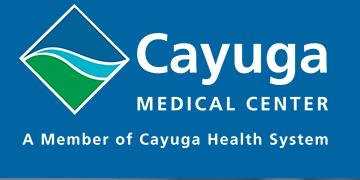
“I look at the whole picture,” Brown told the Enfield Board. “Cayuga Medical has over $130 Million in cash, mutual funds, and securities and investments. And they paid their CEO $4.9 Million in 2018 and $3.9 Million in 2019.” (Brown said he couldn’t find more recent pay data.) “To give them that kind of money, it’s a systemic problem for me.”
Unlike many of the Recovery Fund applicants, Cayuga Medical Center insisted it needed the full $1.5 Million grant to proceed with its plans. It declined to accept any reduced amount. Advisory Committee members made half-hearted attempts at prior meetings to coax CMC into compromise. It never worked.
And while one of Enfield’s struggling applicants, Enfield Food Distribution, first sought a slightly larger total amount than CMC did—$1.66 Million toward construction of a new Enfield Food Pantry—Enfield Food Distribution told the committee it would accept nearly 30 per cent less than its maximum amount, or only $1.2 Million. CMC, on the other hand, refused to budge.
Addressing the Enfield Town Board Wednesday night, Randy Brown leveled more criticism against the hospital giant and against the paperwork it tendered.
“It’s a poor application. It’s not well put together,” Brown said of the hospital’s funding submission. He faulted CMC grant writers for leaning too heavily on the hospital’s lofty reputation and cavalierly brushing aside documentation required from lesser-stature applicants.
“They have money. $130 Million; I mean, My God!” Brown said of CMC’s wealth.
His critique of the hospital to the Enfield Town Board wasn’t over. “And has anybody here experienced their emergency room? Good luck with that. Work on that first!” Brown claimed constituents have called him after waiting five or six hours at CMC’s E.R. for treatment.
The legislator told the Enfield Board he was “frustrated” that none of the six Enfield-based applications tendered to the Recovery Fund consultants received committee approval so they could advance to the full Legislature. “I feel they gave way too much power to the committee,” the Newfield legislator told the Board.
Given the more than 200 applications submitted by businesses, non-profit agencies and governments countywide, and the $34 Million in funding applicants had requested, the Advisory Committee forced itself in its deliberations to reject four requested dollars for every one dollar it recommended. But it was whom the committee has chosen to endorse and reject that’s most rankled those both in an out of County government.
Among Enfield applicants, only the Enfield Community Council’s $206,000 request for a “Mental Health and Community Services” addition to its Community Building had survived the first-round cut. But when committee members got down to parceling out limited money in their second funding round, the ECC proposal fell off the cliff, falling only five spaces below the line where the committee’s money ran out.
During the first-round triage, Enfield Food Distribution’s application secured only two supportive votes out of the six votes cast. The Enfield Volunteer Fire Company’s $186,000 request for a variety of capital improvements failed in a three-three tie. A trio of Town of Enfield applications did even worse.
How the more than 50 committee-recommended funding requests will fare before the full Legislature Tuesday waits to be determined. Because of an uncompleted environmental review, the Second Wind funding will not be in the package placed on legislators’ desks that night. It would be left for a later meeting, unless Randy Brown’s Resolution kills it first. Legislative leaders expect a packed house Tuesday, with hours of advocacy from the floor, followed by legislative debate that may last longer still. Too much talking will push a final funding decision into January.
Perhaps, in the end, the best advice comes from an email to this Councilperson sent months ago, advice Enfield Fire Company President Dennis Hubbell later laid claim to. Commenting on his Town’s own, much smaller appropriation from Washington’s American Rescue Plan, Hubbell wrote, “I think the Town Board is going to wish that they put that (money) in the center of town and burned it.”
Fighting over free money can be hard.
###
Judge Poole Retires; Board ponders options
by Robert Lynch, December 14, 2022; additional reporting December 15, 2022
Judge Betty Poole, on the Enfield bench for 29 years, has retired, Enfield’s Town Board disclosed publicly for the first time at its December monthly meeting Wednesday.
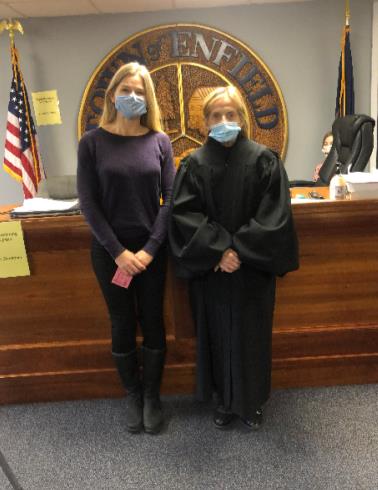
Poole, the Town’s only Justice for the past decade, and one of the Town’s two justices before that, her service dating back to January 1994, tendered her retirement notice, citing health reasons, to State officials in November. Although Town Board members knew of the impending judicial vacancy for several weeks, they withheld public disclosure of her retirement until Wednesday’s session at the request of Supervisor Stephanie Redmond.
Amid low-key acknowledgement of the judge’s decision, the Town Board adopted a Resolution of recognition Wednesday and circulated among its membership a retirement card to sign.
“We truly appreciate all the time, energy and expertise you have brought to the Town of Enfield,” Supervisor Redmond wrote in a letter of appreciation Board members signed and then memorialized in their adopted Resolution. “Our community has benefited from your vast wisdom and selfless dedication,” the letter continued.
Poole’s retirement becomes effective at year’s end. Officials acknowledge that Town Court in Enfield has not been held for several weeks.
Wednesday’s announcement was coupled with Board discussion of judicial succession. The Town Board made no decision on selection of Poole’s replacement. Instead, Board members weighed several options on how to move forward, aided in their discussion by Joshua Shapiro of the New York State Unified Court System. Among the options available to Enfield—and one enthusiastically advanced by Supervisor Redmond—is the potential consolidation of the Enfield Town Court with that of a neighboring municipality, such as Newfield, Ulysses, or the Town of Ithaca.
“I don’t think we’re in any position to make any decisions about that tonight,” Redmond acknowledged as to consolidation. “But it’s time for us to start educating ourselves about whether that’s a move we would want to take as a Town; whether it would actually save us any money, or whether it is something that we need.”
“My first reaction is hesitancy,” Councilperson Robert Lynch (this writer) said in answer to the Supervisor’s suggestion. “The second thing is we have to hear from the community because they’ve got to weigh in on it.”
In addition to calling for a “community conversation” about the Town Court’s future, Lynch offered a third reason for reticence Wednesday. “Really, tonight is not the appropriate time to discuss it further,” he said of consolidation. “We are celebrating Judge Poole’s service…. She has served us well, and we are very disappointed that she has to retire, that she chose to retire, more properly put.”
“This town has to realize we’re at a crossroads,” Lynch concluded. “We have several options open, and I think right for the moment we just have to let the community speak.”
Those options, Joshua Shapiro advised the Board, are several. Think of them as consolidation-heavy and consolidation-light.
“No municipality can ever truly ‘close’ a courthouse, as all Towns must maintain a court under the New York State Constitution,” Shapiro wrote Redmond in a November 29th email, its contents shared with the Board. “However there are several legislative options available that allow you to share court space and judges with other municipalities,” Shapiro wrote. Some options, the judicial administrator told the Board Wednesday, could take one to two years to implement.
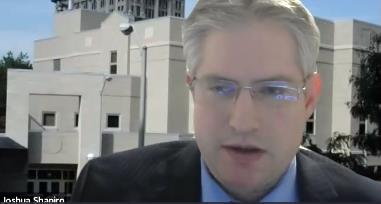
Simplest, Shapiro told Board members, would involve individual Town Justices from separate towns meeting at a common location and sharing costs between them. Municipalities would only need to sign a shared services agreement to implement that change.
But a “true consolidation,” Shapiro warned, would entail far more. Adjoining towns would first need to adopt joint resolutions to study the concept. Then there’d be hearings, followed by a request to the State Legislature for Home Rule legislation. Voters in both municipalities would elect the merged court’s judge. But Shapiro said there’d be no need for a referendum to make the merger happen.
“If we want to do it, now’s our chance.” Redmond remarked as Shapiro spelled out the options. “We have this one year that we have available to think about it until our next election cycle…. I think we should at least review it. We may not choose to consolidate. But we should at least look at our options.”
But with Poole’s year-end departure looming large, “We need have to have a judge somehow,” Lynch reminded the Board. “We would have to have somebody to cover us.”
The Town Board turned to Eugene Faughnan, Administrative Judge for New York’s Sixth Judicial District, in order to escape any legally-prohibited lapse in Enfield court functions after January first. The Board agreed to have Judge Faughnan appoint one or more Town Justices from other local municipalities to sit temporarily in Enfield while the Board weighs its choices.
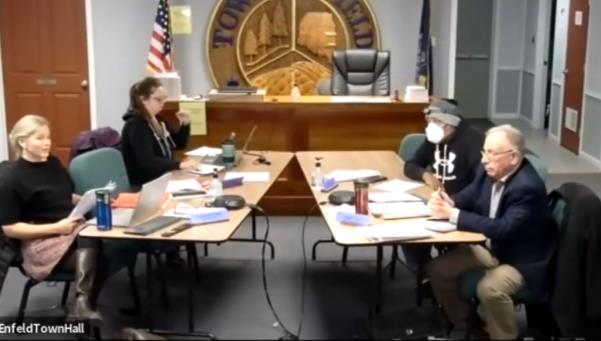
Betty Poole, a Republican, was first elected Enfield Town Justice in 1993. She was then re-elected seven times to successive, four-year terms. Her most recent reelection was last year, when she was cross-endorsed by Democrats. Had she not retired, Poole’s term would have run through 2025.
Prior to her election as Enfield Town Justice, Poole served as court clerk for the Town of Ithaca, in all giving over 33 years of service to the local judicial community.
“She’s one of the good ones,” Josh Shapiro said of Judge Poole. “So she’s got big shoes to fill.”
Should the Town of Enfield retain its Justice Court as now constituted, the Town Board could appoint an interim Town Justice, whose term would run through next year, the appointee then subject to a November election to a shortened term. Candidates for the November election would petition next spring.
As for an interim appointment, Shapiro advised Board members that any appointee would either need to be a licensed attorney or else first complete a State-mandated judicial training course. But that course for lay justices, Redmond warned the Board, will not be conducted until the spring.
When Judge Poole tendered her retirement notice, her own court clerk, her daughter, Tiffany Poole, also announced her resignation, also effective at years end. The Town Board agreed Wednesday to post the clerk’s job opening, which Shapiro advised the Board need not necessarily be filled by an Enfield resident.
“Thank you, Judge Poole, for your service,” Councilperson Lynch closed the Board’s half-hour discussion that addressed both Poole’s judicial legacy and talk of what lies ahead.
“Always professional, sweet, and knowledgeable,” Supervisor Redmond echoed. “She will be missed.”
###
Subdivision Scare rallies Enfield neighbors
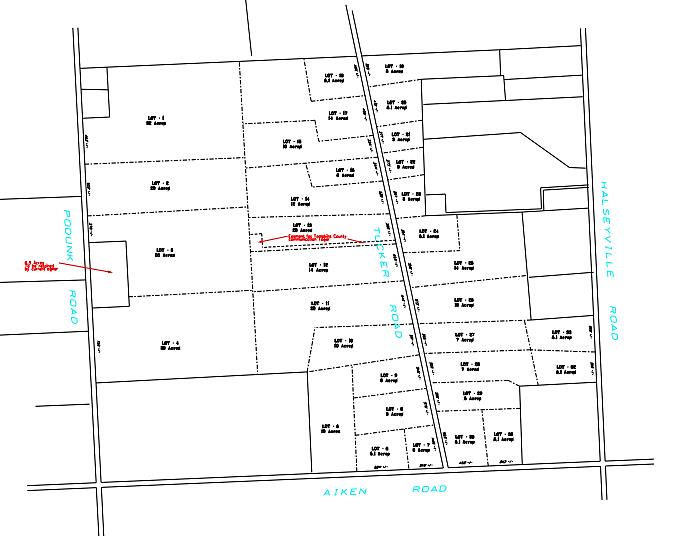
by Robert Lynch, December 8, 2022
If you want to draw people to a public meeting, try stuffing flyers into mailboxes.
Yes, it’s illegal. But at least in Enfield, it gets results.
Case in point: An otherwise-routine monthly session of the Enfield Planning Board turned lively Wednesday night and drew the largest attendance of any meeting of any Board in the town post- pandemic. Some two dozen attendees filled virtually every seat in the room—some chose to stand—after an anonymous somebody filled mailboxes along Halseyville, Podunk, and Aiken Roads and elsewhere with leaflets warning of Land & Lakes Development’s plan to subdivide into building lots a three-parcel, 337-acre tract between Podunk and Halseyville Roads.
Project Manager Alan Lord had only planned to give the Planning Board a quiet introduction Wednesday. What he hadn’t expected was a roomful of listeners…. and critics.
“This is just an informal review,” surveyor Lord assured planners as he outlined his firm’s proposed 33-lot “Breezy Meadows Farm” subdivision. “There’s no timetable for anyone buying the land,” he said.
Wednesday’s meeting was not a public hearing. And because it wasn’t, Board Chairman Dan Walker declined to invite resident comment. Yet some availed themselves of the proceeding’s informal nature to offer their opinions anyway.
“We don’t want the character of the area changed,” said one man, who sat behind this Councilperson/reporter at Wednesday’s meeting. “That’s why this place is filled tonight,” he added.
“I thank you,” another attendee spoke to the room and to its beyond, commending the anonymous informant who skirted federal law by dropping the project’s map into his mailbox.
By Enfield’s rules, a subdividing party like Land & Lakes must advise neighbors within a certain radius of its development plans prior to a Public Hearing. But a hearing won’t likely occur until next March at the earliest. Wednesday’s turnout was, instead, the hearing’s appetizer.
Yet for anyone who’d like to stop “Breezy Meadows” dead in its tracks, there could be problems.
“There’s nothing in our subdivision regulations that would preclude this subdivision,” Chairman Walker warned attendees.
Land & Lakes Development LLC, based in Oneonta, is in the business of subdividing and selling vacant land. It doesn’t build homes upon the lots it sells, Lord said.
“There won’t be 33 lots developed for houses all at once,” Lord assured the Planning Board. What’s more, he said, “People often buy one, two, or three lots together,” making their home site a larger tract.
Land & Lakes’ property plat was the only document presented planners Wednesday. Breezy Meadows’ 33 lots would span both sides of Tucker Road and occupy portions of overgrown fields from Podunk to Halseyville Roads. Subdivided lots would include the 13, long-vacant, decaying, one-story barns that the Babcock Hatchery once used. Much of the remaining land has been abandoned to weeds. Residents reported to the Board that much of it hasn’t been farmed for several years at least.
Records filed with the Tompkins County Clerk indicate the land’s owner is the John William Kenney Revocable Trust. Kathryn Wiechec is its Trustee.
In dividing the tract into building lots, “we tried to make sense,” Alan Lord told the Planning Board. The proposed boundary lines, he said, attempt to follow hedgerows and other natural features. The average lot size, Lord said, is ten acres. Yet his survey puts some lots as small as three acres, others as large as 32.
And as to those long Babcock barns, Lord said, survey lines would not cut through any of the buildings.
Of the various barns on the property, the project manager said, “Some are in good shape; some are in rough shape.” A walk through the Babcock complex this date, later alleged a trespass, confirmed the latter. In one instance, a barn roof had partially collapsed.
Board member Mike Carpenter wondered about the barns’ contents and whether those contents’ disposal would raise any issues. Alan Lord thought they wouldn’t.
“This is not a one-meeting process,” Chair Walker assured his skeptical audience. “This is just sketch plan review.”
Project Manager Lord, joined at Wednesday’s meeting by the firm’s Managing Partner, Bob Lesperence, was advised to submit subdivision maps before February. An environmental assessment will also be required, the extent of which the Board has yet to determine. The Board must also assess the 337-acre tract’s status within an Agricultural District.

“It’s farmable land, but not prime farmable land,” Walker opined. Nonetheless, he added, “Protecting as much farmable land as possible is what we should look at.”
Also on the mind of Enfield Planners is the impact new housing might have on any underground aquifer, on federally-identified wetlands, and perhaps most importantly, on the drivability of Tucker Road, the lightly-traveled gravel road that cuts the proposed subdivision almost in half.
After both the developer and the roomful of neighbors had departed, Walker and the Board resumed their often sleep-inducing, months-long review of subdivision regulations. And as they did, Tucker Road returned to their minds and conversation.
“If they put 15 houses on Tucker Road, they’ll have to do something,” Walker said, concluding that the seldom-traveled side road—purportedly plowed for snow by the Highway Department only once per day—won’t stand up to 100-car-per-day traffic.
“If they’re going to put 15 lots on the road, is it unreasonable to ask will you (the developer) help us fix up Tucker Road,” Walker said to the Board. Requiring a developer to upgrade existing infrastructure when new lots would use only existing roads and not new ones, would be something Enfield law currently fails to demand.
After the developer’s presentation, and outside the meeting room, Land & Lakes Lesperence suggested that in view of the public’s and Board’s concerns that night, his firm may place deed restrictions on what prospective purchasers could develop. For example, the company could prohibit the placement of mobile homes on lots sold.
Lesperence said Land & Lakes had recently subdivided a 900-acre tract in Dryden into 43 building lots and gained community acceptance there.
Overall, the Planning Board’s greatest concern Wednesday was the subdivision’s impact on the rural character of Enfield, and exactly how the planners might mitigate resulting damage.
Alan Lord conceded to the Planning Board that Land & Lakes does not yet own the property. Indeed, road signs adjacent to the tract instruct potential buyers to contact agent Chelsea Smith of Hart and Homes Re/Max realty.
Reached by this writer, Smith Thursday confirmed that although Land & Lakes has signed a purchase contract, it has not yet closed on the purchase, and that her agency’s signs will remain up until the closing takes place.
Smith would not disclose the tract’s purchase price prior to closing.
“The trust made clear it wanted all of the combined parcels marketed to one developer and were not interested in selling off individual lots,” Smith stated. She indicated that multiple parties had expressed interest in the land, but that the trustee chose Land & Lakes as its preferred bidder.
And questioned as to whether Alan Lord’s presentation to the Planning Board might have been premature since the deal has not yet closed, Smith responded, “Land & Lakes is protecting what they’re purchasing; they want to make sure they can do what they’re hoping to do.”
Relaying what she claimed were trustee Kathryn Wiechec’s instructions, later confirmed, Chelsea Smith directed this Councilperson not to post photographs he’d taken when walking portions of the property Thursday. She also instructed that no one, not even potential buyers, should inspect the property without prior appointment.
Neighborhood objections aside, the Breezy Meadows debate may raise for planners doubts regarding the adequacy of Enfield’s subdivision rules as they interface with the Town Comprehensive Plan, whose stated intent is to preserve Enfield’s “rural character.”
“All are acceptable as building lots,” Chair Dan Walker informed his Planning Board colleagues as they eyed Breezy Meadows’ plat, “but maybe not the best use of the land.”
###
Enfield’s Pre-Christmas Crawl
Committee zeroes-out Recovery Fund requests; Local legislator objects
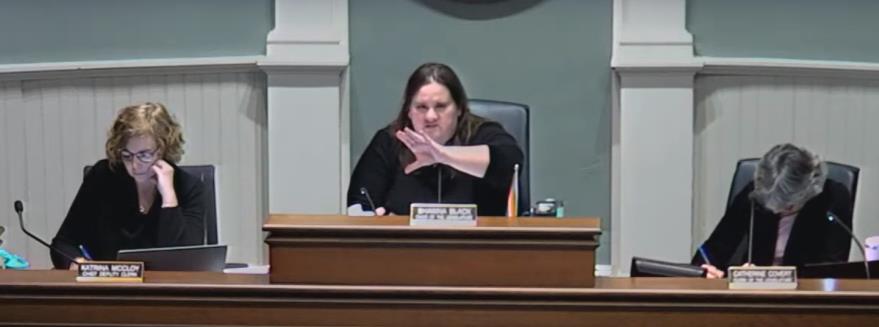
by Robert Lynch, December 6, 2022; additional reporting December 7, 2022
Cayuga Medical Center came out the big winner and Enfield agencies the distinct losers as a six-person committee of Tompkins County legislators Monday adopted its final recommendation for allocating $6.5 Million under this first—and likely only—distribution of federal American Rescue Plan assistance under County Government’s much-coveted Community Recovery Fund.
Yet not so fast. One night later, Tuesday, as the full Legislature convened to conduct other business, members not sitting on the committee made it clear that they, too, want a say in the final call.
“When I look at Enfield, the poorest town in the county, getting nothing, I mean there’s just no fairness in that,” Randy Brown, who represents Enfield’s southern half, told legislative colleagues at Tuesday’s meeting.
And then, Brown turned his attention to Cayuga Medical Center (CMC), the hospital giant recommended to receive the biggest Recovery Fund handout of all.
“When I look at (Enfield’s exclusion),” said Brown, “and I look at us giving a million-and-a-half dollars to one applicant, and it takes away from ten or 15 other ones, it’s the way I look at it… I just struggle with that.”
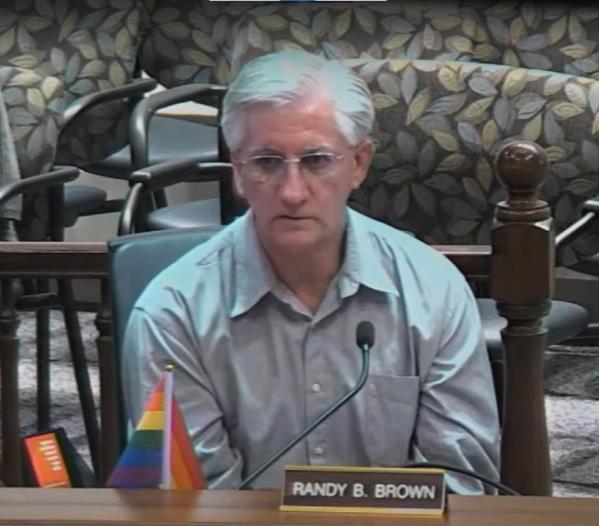
Yes, CMC would take away from others. And the way the Advisory Committee and the County’s Rochester-based consultant did the math, the money given the hospital would come at the expense to Enfield aspirants, most notably the Enfield Community Council.
Though it had cleared the Fund Advisory Committee’s first round triage of more than 200 qualifying applications and initially gained support from as many as four of the committee’s six members, the Enfield Community Council’s (ECC’s) request for money to tack a mental health services wing onto its community center dropped out of funding eligibility Monday as the Advisory Committee ratified, without significant change, a complex “merged spreadsheet” engineered by Tompkins County’s consultant, the MRB Group.
Previously eliminated from consideration through joint County and MRB rules were Enfield Food Distribution’s $1.66 Million request to construct a new Enfield Food Pantry, and the Enfield Volunteer Fire Company’s $207,000 multi-faceted capital improvement project. A trio of funding requests by the Town of Enfield itself was similarly rejected during first-round review.
The $1.5 Million funding package for CMC, endorsed Monday by the Advisory Committee and passed on to the Legislature, would partially fund the Medical Center’s plans to construct an “Intensive Crisis Stabilization Center.” CMC’s application carries by far the largest dollar total of anything the committee recommended.
“Quite clearly, by the Resolution now drafted, your committee is shortchanging Enfield,” Enfield Councilperson Robert Lynch (this writer) wrote the Advisory Committee and all 13 County legislators prior to the December 5th meeting. “I trust future deliberations will correct this shortcoming and right this wrong,” Lynch’s message concluded.
As it stood at the end of Monday’s committee session, the committee’s plan to apportion 6.5 Million Community Recovery Fund dollars among 52 recommended applicants would go to the full Legislature December 20th for amendments and an up-or-down vote. Individual legislators could pull out any line item they chose, amend its dollar figure, or delete it altogether. And that’s how it will likely occur.
But what sprang out of nowhere Tuesday night was an hour-long legislative discussion about the funding process a full two weeks before it was scheduled to occur. And during the impromptu debate, Newfield-Enfield legislator Brown questioned the power wielded by the six-member Advisory Committee in deciding which applications will survive for a final vote, and which ones will simply die.
“I think the process you’re proposing gives the committee too much power,” Brown said.
Brown sought, but failed, in an attempt to allow every legislator—not just committee members—the opportunity to navigate the consultant’s complex electronic spreadsheet to prioritize which applicants they, themselves, would accept or reject.
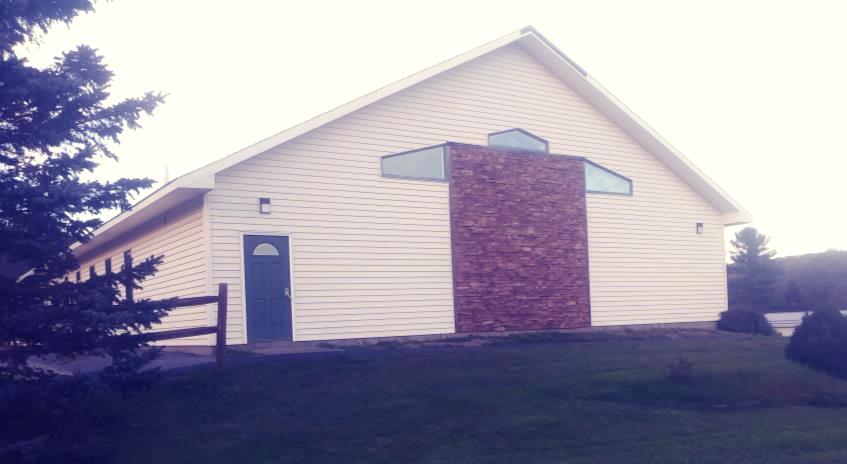
“You’re not going to know if you don’t go through the exercise,” Brown told the Legislature. “And if you had the chance to do it in committee, then every legislator has to share the same opportunity. It’s not right.”
But others think differently. Some would prefer the committee-drafted funding package be kept intact as much as possible to the point of having the full Legislature ratify it without any tinkering.
“I would hope that the members of the committee, at least, could agree that whatever we recommend coming out of today’s meeting we will support in full,” the Legislature’s Budget Chair, Deborah Dawson, told the committee Monday. “That would be extremely helpful.”
Helpful, and also politically crafty. With the full Legislature one member short and eight votes required for any amendment to prevail, all six committee members, should they hold together, could block any funding change on the Legislature’s floor.
Yet in truth, the consolidated Resolution by which the committee advanced Community Recovery funding Monday runs contrary to the Legislature’s earlier intent, one clearly implied on the County’s own Recovery Fund webpage. Stated plans call for only those applications totaling less than $250,000 to be bundled for a vote. Those each topping a quarter-Million—currently eight on the Resolution’s list—would receive individual consideration.
Legislative leaders, including the Legislature’s Chair, Shawna Black, voiced comfort Monday about changing rules on the fly.
“I honestly think that if we start taking things out of the Resolution that we’re presenting to the Legislature, it starts picking apart the decisions that we’ve made,” Black said. “If we start separating these into eight different resolutions, you’re going to see this completely open up on the chamber floor.”
“We could be here until 2045,” Budget Chair Dawson remarked.
Of course, an open-floor debate over what deserves support is exactly what many advocates for agencies denied funding would like to see. And judging from legislator discussions one night later, cherry-picking is what they may get.
Just how deep into the pile of 212 Recovery Fund submissions the Legislature will dig December 20th remains to be determined. Brown would prefer the entire list—which would include both the Enfield Food Pantry and the Fire Company—remain open for consideration. But a larger plurality indicated by a straw vote Tuesday that they want a tighter list, a list limited to the 80 candidates that survived the committee’s first-round review in November.
Dryden’s Greg Mezey joined Newfield’s Brown in urging applicants like the pantry and the EVFC remain in the running.
“Do I agree with everything (the committee recommended)? No,” said Mezey. “Do I wish we had the opportunity to vote (individually) on the larger items? Absolutely.”
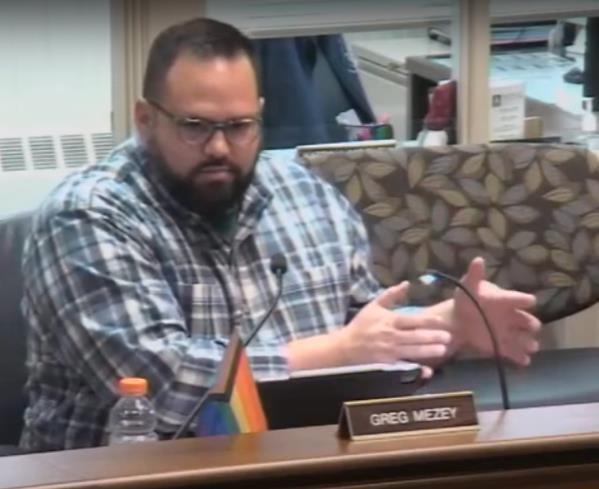
In a pair of straw votes that a frustrated and impasse-weary Shawna Black called near the close of Tuesday’s meeting, only Mezey and Lansing’s Mike Sigler joined Brown in his call for every member to score every single Recovery Fund applicant. More legislators, though not a sufficient majority, would have reviewed scoring with only the top 80 candidates included. As the second of the two polls ended, legislators decided to subject only the committee’s work to legislative scrutiny. Nevertheless, when the committee recommendation reaches the legislative floor December 20th, expect amendment after amendment… after amendment.
By that route, perhaps the Food Pantry, the ECC and the EVFC proposals could gain a second life.
“If it’s 80, it’s 80,” Brown conceded. “I’ll add mine in. I guess I have the right to do that, to put in ones that I would support. And I may only get one vote. But I’ve got to do it—no choice.”
****
Deletion of the Enfield Community Council’s application from the final Resolution speaks to the complexity by which consultants allowed each committee member to play musical chairs with dollar signs. A many-lined, multi-colored spreadsheet, shared publicly only minutes before Monday’s meeting, permitted members to individually rank-choice the 80 applicants that had received preliminary support by at least two-thirds of the committee at earlier meetings. Of the several Enfield applicants, only the Community Council had crossed that threshold.
Committee members could not only affirm or deny support to any applicant in making spreadsheet choices. They could also recommend full or partial funding for each. MRB staff then collated the individual preferences and ranked them in priority. Consultants made assumptions. For one thing, they gave applicants achieving support from all six committee members top billing. They placed those with five-member support next-down on the list, and applications gaining only four votes thereafter. Applicants securing only a three-three tie or lesser support were kicked out. Within any category, the stronger the support for full-funding, the mightier its application became.
Consultants calculated funding levels based on averaging committee member recommendations. MRB’s Michael N’Dolo, in response to legislator Anne Koreman’s inquiry, acknowledged that whenever at least four members recommended full-funding, MRB had assigned the full-dollar amount, regardless of what anyone else had suggested.
“It’s the largest spreadsheet I’ve ever seen,” Committee Chair Dan Klein interjected.
Yes, and also the most complicated. And some might insist the most unfair as well.
Coldly objective standards prevailed throughout MRB’s number-crunching. The ECC’s disqualification came when member rankings granted its application only three-votes out of six. MRB relegated ECC to a grayed-out funding dungeon at the sheet’s bottom. Nonetheless, the consultant placed the Community Council just five lines below the funding cutoff. As they say, so close, yet so far away.
The Community Council sought $206,000 from the Recovery fund. ECC would use the money to replace its modular “teen space” trailer with a permanent structure to, in its application’s words, provide “shared office space and meeting space for mental health and other community service professionals.” Though it secured four supportive votes during first-round review, only three members voted for funding on the spreadsheet. They were legislators Klein, Koreman, and Veronica Pillar. Each voted for full funding. Legislature Chair Black, who’d backed ECC during the first round, dropped her support this second time.
But the biggest of the big-ticket applicants that survived the committee’s final triage was Cayuga Medical Center. Its $1.5 Million application would fund a fraction of the non-profit hospital’s $9 Million cost of building a center to provide, as its application states, “24/7 mental health and substance abuse crisis support and safe, effective, evidence-based care.” Committee and consultant procedures largely ignored CMC’s vast alternate funding streams.

Carrying lesser price tags than CMC’s recommended award, yet still within the top-tier of recommended winners, were proposals by Second Wind Cottages to construct “25 temporary campsite shelters” in Newfield for the homeless ($510,000 recommended); the Greater Ithaca Activities Center, for money to transform a gymnasium into a center for teen afterschool programs ($500,000); and an initiative by Sustainable Fingerlakes to retrofit mobile homes with heat pumps.
The Sustainable Fingerlakes application, by the way, was endorsed in late-October on a four-to-one vote by the Enfield Town Board. Dissenting Councilperson Lynch at the time worried that the Town Board’s endorsement could jeopardize more worthwhile local projects. Lynch also said trailer retrofits, in some instances, amount to “putting lipstick on a pig.”
Using its decidedly green-eyeshade frame of reference, the Advisory Committee Monday unanimously passed on its recommendations to the full Legislature with little change from the group calculator’s initial rankings.
During its Monday deliberations, only one significant funding amendment was proposed. And a committee majority brushed it back. Veronica Pillar proposed zeroing-out all funding to Bangs Ambulance for proposed purchase of a $150,000 critical care transport unit and also trimming several other applications to partially fund a cooperative farming effort by Khuba International.
Pillar’s amendment lost four votes to two. “Once you open this up, it becomes a process of favorites, and that’s something we promised our community we would not do,” Shawna Black said in opposing Pillar’s suggested revision.
Yet for many in Enfield, it may become a question of equity and fairness; maybe rural justice. Will those farthest removed from Ithaca’s population and prosperity receive their equal slice of the Recovery Fund pie?
“Enfield, Tompkins County’s poorest town, always seems to get forgotten by those downtown,” Councilperson Lynch quoted a prominent Enfield constituent as saying as he wrote County legislators Tuesday. Lynch’s quote was paraphrased on the Legislature’s floor later that night by Randy Brown.
“What’s done is done,” Lynch wrote legislators of the committee’s earlier action as the Councilperson eyed the late-December meeting at which final funding could be awarded. “At that meeting, I expect—and encourage—vigorous, passionate debate,” the Councilperson wrote. “I plan to attend.”
It’s sure to be a long meeting, that Tuesday before Christmas. Legislators this more recent Tuesday predicted that public comments alone could consume the first two hours. Black would limit legislative debate thereafter to just another couple hours. If debate drags on, she warned, a final vote would be postponed until January.
“I know that’s not typically how we’ve done things,” Black said in setting the two-hour limit. “But this is a really big decision, and we’ve worked real hard on it, and we need to get it right.”
###
December News Briefs:
Solar Law Revised; Moratorium Ending:
(Dec. 28): A year-long moratorium on approval of new large solar farms in Enfield will end now that the Town Board Tuesday approved a series of revisions to the Town’s three-year old Solar law, its regulations tucked within Enfield’s larger requirements for site plan review.
The most important change the revised law makes is financial; it states clearly that the Town reserves the right to enter into Host Community Agreements with solar developers, agreements that would provide the Town direct compensation in addition to the Payment in Lieu of Tax (PILOT) funding that might otherwise be negotiated, including by Tompkins County’s Industrial Development Agency.
In December 2021, the Enfield Board enacted the current moratorium after financial negotiations with developers of Norbut Solar’s Applegate Road solar farm proposal failed to provide compensation beyond the PILOT’s amount.
But the Solar Law may change further. Councilperson Robert Lynch Tuesday introduced—but then withdrew—an amendment that would have tightened controls on how solar farm operators maintain the legally-required “residual acreage,” that part of the property it must keep free from solar panels. Lynch wanted rules that prevent the operator from “wasting” the land; letting it grow to weeds, rather than keeping it farmed or mowed.
After lengthy debate, Board members promised to pursue Lynch’s concerns in future months and perhaps toughen the rules in time.
There’s expanded coverage of the story now posted on this website.
###
Deal, But (Sadly) No Deal:
(Dec. 28): It sounded too good to be true. And it was.

Meeting during the closing moments of a “live” online equipment auction December 14, our Enfield Town Board authorized up to $30,000 for purchase of a (very slightly) used standby generator for our Highway Department. As the meeting closed, we thought we’d bought it. Sadly, we did not.
During the closing minutes of our Town Board’s end-of-year meeting December 27, Highway Superintendent Buddy Rollins shared the bad news. Another party had bid higher before the closing gavel. And once a commission payment was added in, the total climbed slightly above what we’d authorized Rollins’ deputy to bid. Too bad. We need that generator. And the price was a bargain.
“Please look for another one,” I advised Rollins. I know he will. Better luck next time.
On the brighter side, the Superintendent reported he’d successfully bid—and our Board Tuesday promptly authorized—purchase of a 2015 dump truck and salt spreader formerly used by Tompkins County’s Highway Department. It replaces the truck in our fleet with a blown engine. No question; our bid’s good this time. / RL
###
New Court Clerk Named:
(Dec. 28): The resignation of Enfield Town Justice Betty Poole and her court clerk, her daughter Tiffany Poole, would have left Town Court completely unstaffed at year’s end. Tuesday night, the Town Board filled at least 50% of the combined vacancy.
By unanimous vote, the Town Board tapped recently-arrived Enfield resident Heather Knutsen to be court clerk. Knutsen, who admits she holds a rather unconventional resume for the job, was for the past 31 years a veterinarian’s assistant in Oneonta. Marriage brought her to this community.
But Knutsen holds an important professional asset. She told the Board her father has been Town Justice for the Town of Schoharie. And the new appointee said she might choose to run for Enfield Town Justice in the coming year’s election cycle to permanently fill the judicial vacancy.
The State Court System will appoint Judge Poole’s immediate replacement, but reportedly has yet to do so. Knutsen said she recognizes her appointment is discretionary. A newly-appointed justice might want a different clerk.
###
DOT: Hayts Rd. Stays at 55:
(Dec 12.): For the moment, the Town of Enfield and Hayts Road residents have lost their fight to cut a speed limit that they say once claimed a life.

The August 2018 death of 82-year old Carmen Jacks, who died when struck by a car while crossing Hayts Road east of Van Dorn, prompted the Town and neighbors to fight for safety improvements, including a lower speed limit.
But in a December 6th letter to the Town, with logic that may sound clueless, Scott Bates, Regional Traffic Engineer for the New York State Department of Transportation (NYSDOT) rejected Enfield’s request for a lower limit on Hayts between Sheffield and Sage Roads.
“NYSDOT professionals determined that lowering the speed limit would not be appropriate at this time,” Bates wrote the Town. “Setting the speed limit at the prevailing free-flow speed (55 MPH) decreases conflicts, minimizes crashes, and makes it easier for vehicles and pedestrians to judge the speed of approaching vehicles.” Never mentioned, the limited sight distance that likely caused Carmen’s death.
“No, I am not happy with this finding,” Enfield Councilperson Robert Lynch (this writer) wrote the Town Board Monday after reading Bates’ letter. “A woman got killed on Hayts near Van Dorn, and NYSDOT doesn’t care.” Lynch encouraged the Board to consider other measures to calm Hayts Road traffic.
###
Progressive and New to You:
(Dec. 18): Admittedly, it’s not everyone’s cup of tea; eclectic, uninhibited, and decidedly left-of-center. But culminating a decade-long effort, Ithaca Community Radio, licensee of Radio Station WRFI, signed-on December 13th with a full-power station that expands its reach to cover most of Tompkins County, including Enfield.

Up until now, the volunteer-staffed, progressive licensee has broadcast locally with only a highly-directionalized, low-power signal at 88.1 MHz. one that covered Ithaca, but was barely audible west of Sheffield Road. Now, by rebuilding its tiny, co-owned Odessa affiliate (formerly WINO), WRFI, at 89.7-FM, blankets West Hill communities it could not before reach.
Yes, for some, this is all inside baseball by a diehard former broadcaster. But here’s something to remember: For all its sometimes strangeness and arguable political bias, WRFI does cover local news, performing a duty that many other stations have forgotten. Refreshing. / RL
###
Cutting Speeds in a Flash:

(Dec. 11): Yes, Ithaca’s City speed limits will fall to 25. And no, from attending Common Council last Wednesday, you never would have known it.
Buried within a “Consent Agenda” whose items were never read openly and passed by only a quick show of hands, City Alderpersons voted 9-0 (Cynthia Brock was excused) to cut the city’s long-standing 30 MHP limit to little faster than a school zone. It was a long meeting, and Council treated the zone-thing as a throw away.
City officials estimate replacing some 135 old speed signs (and having a contractor do it) will cost Ithaca $30,000. By that same, quick vote, Council approved the money.
City traffic-calmers like the change. Probably rural commuters will hate it. And NYDOT gets caught in the middle. The City’s Director of Transportation and Parking says large portions of Routes 13, 79, 96 and 89 are State-owned and can’t have speeds lowered without State DOT consent.
And more under-the-radar news: With Council mired in matters like a botched Police Chief hiring and testy labor talks, this one got swept under Wednesday’s rug too. Council authorized the first step toward a new $20-$30 Million Public Safety Facility. It approved up to $4 Million in bonds for site purchase, location not stated.
###

